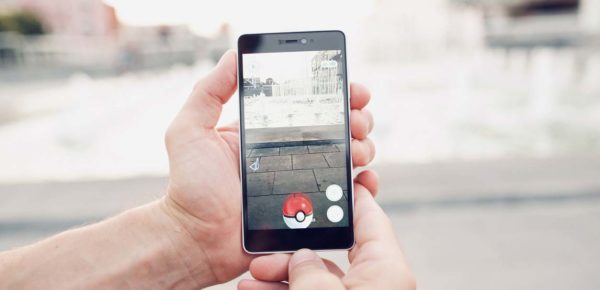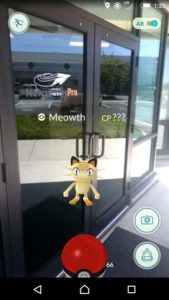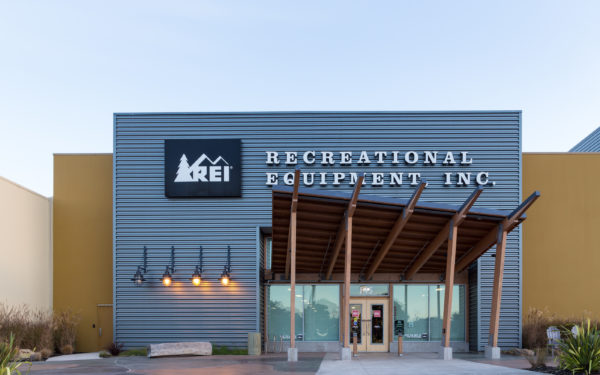Three nerds walk into an outdoor recreation store.
Sounds like the beginning of a joke, but it’s actually a testament to the marketing genius that is REI. By knowing exactly who their end buyer is, REI is able to keep channels of communication always open with their ideal buyer.

To clarify, the nerds in question are myself and my friends. Around two weeks ago, Nintendo released a new mobile phone game you might have heard about: Pokémon Go. It became an instant international phenomenon, making over $14 million in just two weeks and sending Nintendo’s stock up 51 percent.

Even if you haven’t heard of it, you most certainly have seen people playing. The game makes use of Google Maps and interacts with the real world. In order to participate, players literally have to explore the non-pixelated space outside their front door.
Once players began interacting with the game, it became immediately apparent that many of them would need equipment to accommodate their new environment — bikes, backpacks, water bottles, portable chargers, and the like. When my friends and I began looking for this new gear, we didn’t know where to go. Wal-Mart? Target? The pawn shop? I decided to ask one of my outdoorsy co-workers.
“REI,” he told me without hesitation. “If you’re going to be active outdoors, you need to get your stuff there.”
He said it with such conviction that I wondered why I hadn’t thought of it myself. Then I looked into REI, and the answer became clear: REI hadn’t been wasting their time marketing to someone like me.

To be successful today, small businesses need to identify where they fit in a niche market. They have to know what their customers look like. Instead of throwing away time and money advertising to people who may never need their products, REI has focused on becoming the go-to place for those who would actually spend money with them.
And it worked! REI’s name has became synonymous with outdoor recreation, and they’ve been rewarded with both success and customers who will almost always refer to REI above all others. REI does this by targeting their ideal buyer.
Finding Your Ideal Buyer
Once upon a time, the answer to “Who’s my ideal buyer?” might have been something like “the Baby Boomer generation” or “Males, ages 18–32.” But this cannot be the case in today’s market, especially with small businesses.
Relying on broad demographics can lead to even broader marketing, based on assumptions about how those demographics behave. And that’s not always a good thing. For example, many video game makers miss out on 50 percent of their customer potential because they’re still holding on to the outdated assumption that “Girls don’t play video games.”

Just take a look at this latest craze — there are just as many women playing Pokémon Go as there are men. Can you imagine if Nintendo only focused their attention on marketing to male gamers? They’d be missing out on more than 50 percent of their profits!
For the record, marketing to every single man and woman would also be missing the mark. Don’t let assumptions make you blind to who could be wanting your product, but take the time to understand the psychographics of your ideal buyers.
Take a close look at who specifically is buying your product or service. In the case of REI, the products they provide — outdoor gear — are most beneficial to people who spend extended amounts of time outside. Specifically “men and women, age 22–45, well-educated, with careers that allow them to experience the great outdoors or live in areas in which that lifestyle is most common.”
Your job is not to “narrow” your customer base so much as it is to target your best prospects. Don’t spend your money on marketing to people who will never respond to your service.
Reaching Out to Ideal Buyers
Once you know who will be buying your product or service, your next step is to reach out to them. The best way to accomplish this is to identify your ideal buyer’s unique qualities and what they truly want.

There are many ways to reach your ideal buyer, and within each option are countless more avenues. Think social media (like Facebook, Twitter, Instagram, LinkedIn, or even Google Ads), traditional advertising (including TV spots, radio ads, or perhaps billboards), or direct mail. Although a small part of a big strategy, there’s a reason why even Newsletter Pro is on Twitter. With direct mail, you can choose personalized newsletters and flyers or go digital with email campaigns.
Rather than spreading yourself thin by trying to send a message through every outlet, focus on those that will reach your audience in the way they prefer. What social media outlets do they frequent? How do they consume their entertainment? Where do they get their news?
REI Knows Their Customers
REI dominates social media, with 1.5 million likes on Facebook, 342,000 followers on Twitter, and 1.1 million followers on Instagram. If you’re reading this thinking, “They can’t be that great — 342,000 followers on Twitter is nothing,” you’d be missing out on the larger picture. In truth, this is just another example of how well REI knows their end buyer.
On a side note, Newsletter Pro is on Facebook too, although with just a few less likes!
While REI is only sending out tweets once a day, they’re posting three to four times a day on Instagram — the social media platform their end buyer prefers. That’s because images of the great outdoors express feelings of freedom far better than a mere 140 characters.
By being active on Instagram, REI is able to better communicate with their target customers and form a connection that translates to sales. Whether their customers are getting away from life’s stressors by conquering Mount Kilimanjaro or taking the ride of a lifetime down the Rio Grande, REI has the gear to fit any adventure, and their social media pictures of churning rivers and snowy peaks are the proof.
The Ultimate Sacrifice
REI went one step further to align themselves with the values of their ideal buyer. In 2015, REI did the unthinkable for a retail store and closed their doors on Black Friday. Rather than setting up doorbusters for early-morning crowds, they paid their employees to #OptOutside, and encouraged them to spend the day outside with friends and family. REI also invited customers to share their own experiences.
With this act, REI showed that they recognized the values of their ideal buyers. Their ideal customers are people who care about living a healthy lifestyle, spending time with their friends and family, and experiencing life. By closing their doors, REI allowed their employees to enjoy these same things. This built a stronger relationship with their customers, increasing loyalty.
Over 1.4 million people responded to REI’s sacrifice. No one wants to spend hours in line or indoors when they could be outside, enjoying the final days of fall. Nor do employees want to abandon Thanksgiving dinner early because they have to work that evening. REI connected with their ideal buyer by forgoing what is considered the “high holiday” of retail.
They also enjoyed a great deal of positive — and free — publicity when the announcement went viral.
A Marketing Master
That clear understanding of who their ideal buyer is has been reflected in REI’s overall success. With 143 stores in over 36 states, REI enjoyed an annual revenue of $2.4 billion in 2015, up 9.3 percent from 2014.

All of these numbers look like they will just keep growing as REI continues to recognize and connect with their ideal buyer. With their 1440 Project, REI continues to emphasized the adventures to be had outdoors and the limited time in each day to enjoy them.
REI knows who their customers are. And while their target audience may not be writers who only go outside to chase after virtual Japanese monsters via Pokémon Go, REI’s skill at making themselves synonymous with exploring the outdoors led even me and my nerdy friends to their establishment.







